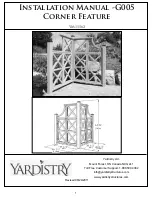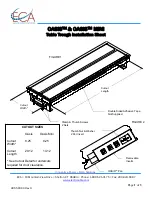
3
MODULE DESCRIPTION
Inmarsat B
PAGE 3-2
9901
3.1.2
DIPLEXER
When a conversation is in progress via a satellite, the transmission mode is normally duplex which means
that the transmitter and receiver are active simultaneously. To prevent the HPA from overloading the LNA,
an interconnection device is used, i.e. a diplexer. Fig. 3.2 shows a block diagram of the diplexer.
Network
Coupling
TX Filter
Antenna Port
TX Port
RX Filter
RX Port
35523A
Fig. 3.2.
The diplexer is a mechanical device, built up as two tenth-order band-pass filters connected to a coupling
network at the antenna port. The receiver path pass band is 1525 to 1545 MHz, and the transmitter path
pass band is 1626.5 to 1646.5 MHz.
Each filter is constructed of quarterwave resonators, the distance between them determining the coupling
coefficient. The tuning capacitors are made using screws in the top cover of the diplexer. Changing the
distance between a tuning screw and the resonator causes the top loading capacity to change, thus
changing the resonance frequency of the resonator as well.
The resonators are made of aluminium rods and the whole unit is silver plated to obtain a low insertion
loss. Furthermore, the device is sealed on the outside to avoid oxidation.
To obtain a low receiver noise figure, the LNA is placed in the diplexer. Interconnection between diplexer
receiver port and LNA input is made by means of a short piece of semi rigid cable. At antenna and TX
port, SMA connectors are used.
3.1.3
LNA
The main signal path in the LNA is constructed with four transistors and two helical filters as shown in
fig. 3.3.
Network
Matching
Down Converter
Tracking Receiver
1535 MHz
1535 MHz
Power
Divider
Bias
Bias
Bias
Bias
Reg.
Voltage
Reg.
Voltage
Bjt
Bjt
Bjt
GaAs
35524
Fig. 3.3.
The semi rigid cable from the diplexer is soldered directly to the printed circuit board where it is connected
to a microstrip impedance matching network. The matching network acts as interconnection between
diplexer and the first gain stage to obtain a low noise figure. The first amplifier stage consists of a low noise
GaAs FET whereas the remaining three stages are based on junction transistors.
The two helical filters cover the maritime band, 1525 to 1545 MHz and ensure high immunity for out of
band signals. After the last filter, a microstrip power divider equally divides the signal to tracking receiver
and DOWN converter inputs.
The LNA is supplied with +18V DC from the tracking receiver through the coax cable which also carries
the RF signal.
In order to minimise gain variation over the entire temperature range, active bias network is used to keep
the current in each stage constant. The GaAs FET also uses a negative bias voltage which is made from
the +18V supply in a DC to DC converter based on pulse width modulation.
Содержание Inmarsat B
Страница 1: ...SAILOR Inmarsat B Workshop Manual W4400GB0 ...
Страница 2: ...Inmarsat B Workshop Manual 9905 ...
Страница 7: ...CONTENTS 1 INTRODUCTION 1 1 1 1 SYSTEM COMPONENTS 1 2 1 2 TECHNICAL DATA 1 2 9849 Inmarsat B ...
Страница 46: ...4 ACCESSORIES Inmarsat B PAGE 4 3 Inmarsat B 9849 Diagram Veritas connection box ...
Страница 124: ...CONTENTS 8 PERFORMANCE CHECK AFTER REPAIR 8 1 8 1 START UP SEQUENCE 8 1 9936 Inmarsat B ...
Страница 127: ...CONTENTS 9 SERVICE 9 1 9 1 CHECK OF OCXO 9 1 9936 Inmarsat B ...
Страница 129: ...CONTENTS 10 PARTS LISTS 10 1 9901 Inmarsat B ...
Страница 133: ...CONTENTS 11 ABBREVIATIONS 11 1 Inmarsat B 9849 ...
















































